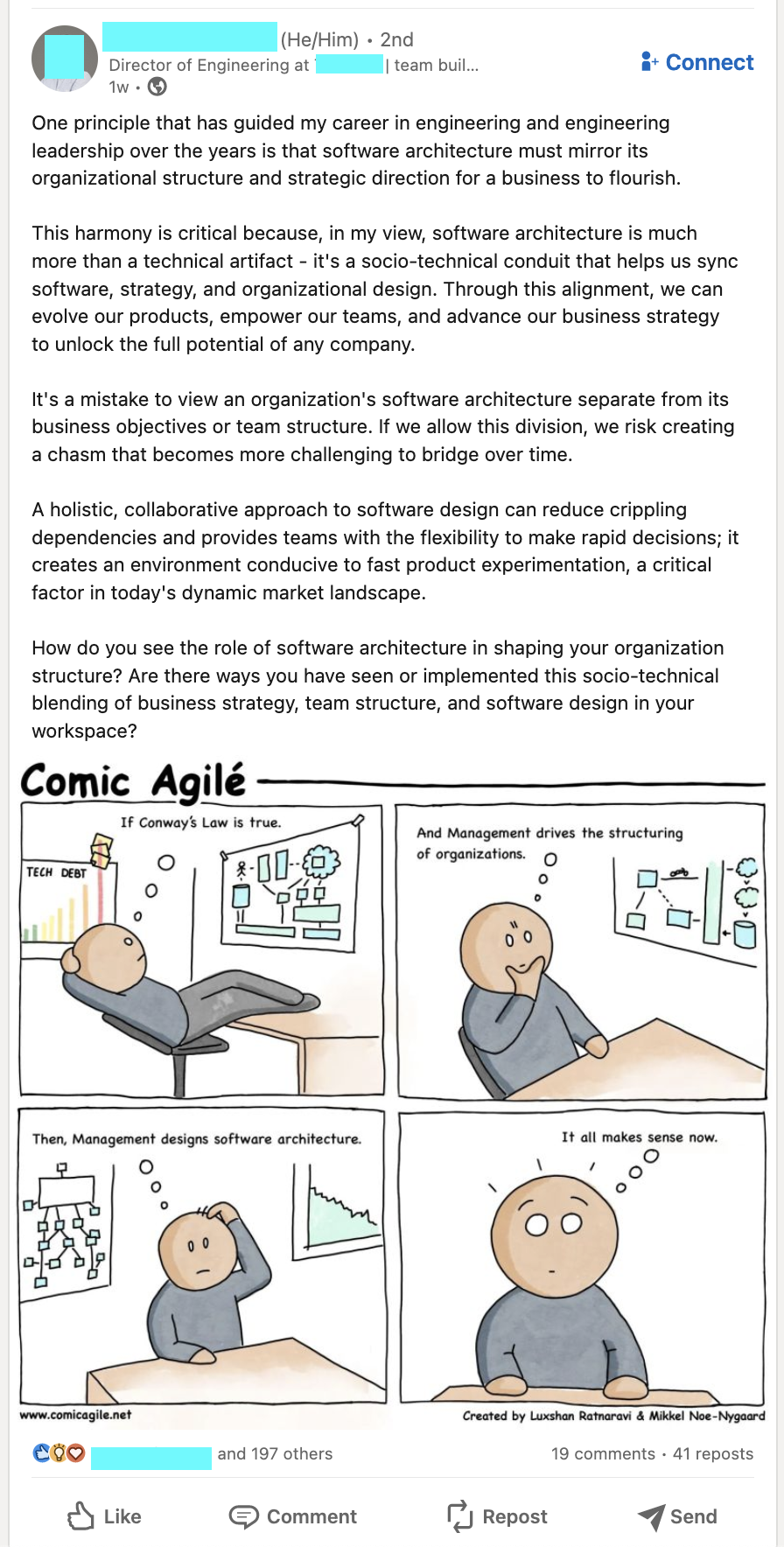Oooh, are we saying complete bullshit on well-known principles just to make ourselves look better? Here, lemme try
One principle that has guided my career in engineering is predicated on a theory which asserts that an organization inevitably produces designs closely mirroring its own communication structure. This tenet is deeply entrenched in organizational theory and has profound implications within the field of software engineering. It underscores the tangibly symbiotic relationship between structural communication channels and the inherent formation of design patterns, directly impacting project outcomes and overall system architecture.
Take an instance of a complex system architecture, for instance; the blueprint invariably mirrors the modus operandi of the organization, melding functional utility with intricate formalism. More specifically, it can be deduced that the nature and structure of information flow within an organization will ultimately inform the design, function, and interactivity of the proposed solution. Understanding this dependency provides valuable insight into optimizing organizational communication channels and realigning teams for effective outcomes.
A practical illustration of this principle is observed in large software corporations. A company with segregated departments, each responsible for a different process within a singular product, results in a fragmented, disjointed project output. Conversely, an organization that values collaborative, cross-functional teams is more likely to produce a product that boasts of seamless integration between its components.
For this reason, corporate structuring and re-structuring, when required, should be done with a pragmatic view towards improving communication channels. Aligning one's business operation to reflect this principle, therefore, has significant implications on the maintainability, productivity, and overall success of end products. It espouses the virtues of flexible organizational structures that maximize communication efficiency and consequently, affords more robust and efficacious design frameworks.
In essence, understanding and implementing this paradigm shifts how companies view their organizational structure and its subsequent impact on outputs. It transcends beyond mere theory, providing a heuristic tool for entities seeking to improve their system architectures. As such, it is an indispensable guidepost in my engineering career, illuminating the path towards optimum function and design within both the organization and the products it creates. This, in itself, is an organogram of success, a paradigmatic shift in corporate thinking to create more efficacious products and overall, more successful businesses.
Full disclosure, I didn't write this, this is GPT-4 on Conway's law. Here's the prompt, if anyone's curious:
write five paragraphs on conway's law that makes the speaker sound smart through a corporate vocabulary. start with "one principle that has guided my career in engineering". do not mention conway's law or conway himself by name.

